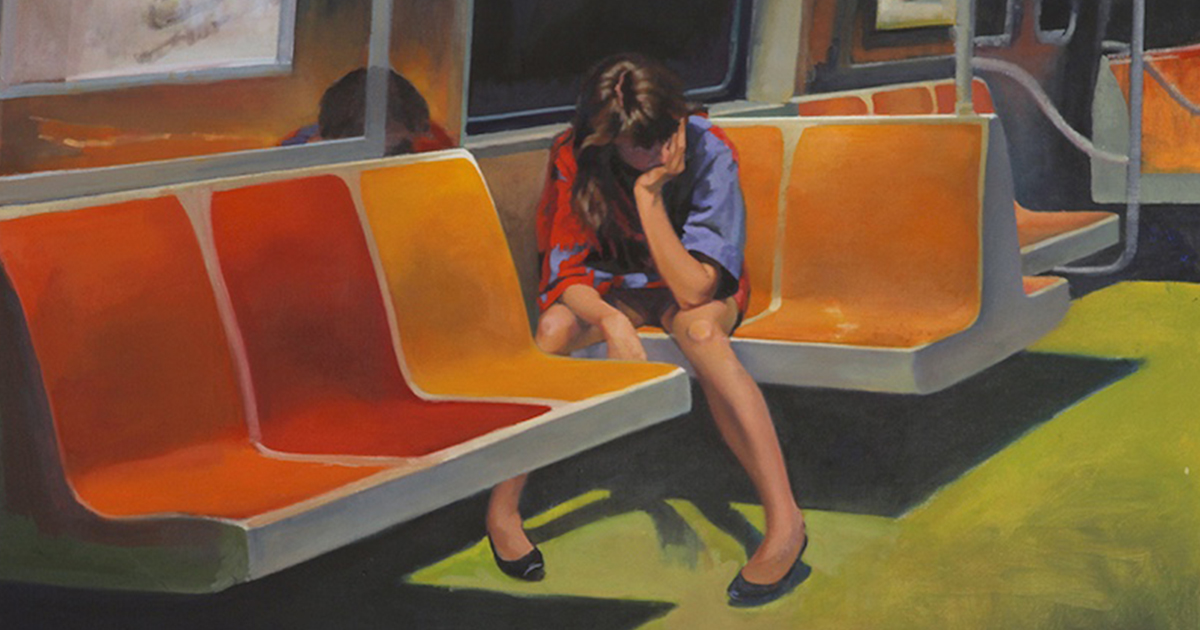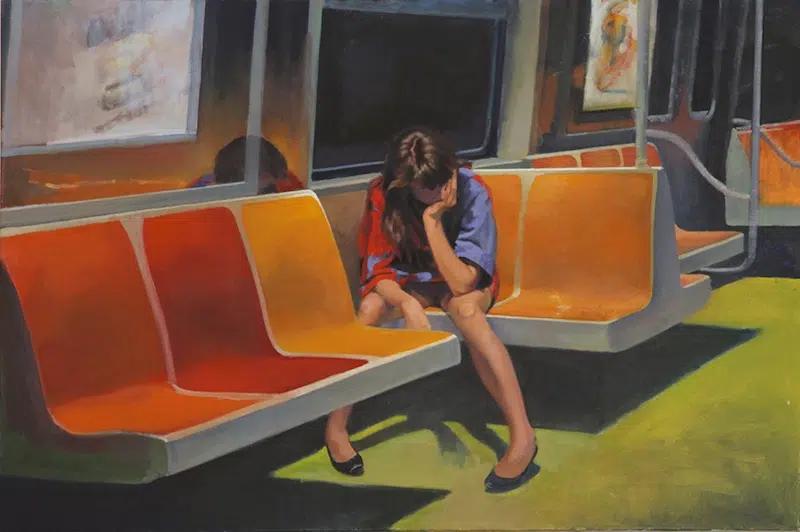
British-born, New York–based artist Nigel Van Wieck captures intimate human moments that invite viewers to feel like voyeurs, glimpsing the private lives of others. A self-proclaimed storyteller and American Realist, Van Wieck paints what he sees, finding inspiration in he bars, street corners, stations, and beaches of the U.S.
From a candid family portrait to a quiet moment of a man waiting for a train, each of Van Wieck’s oil paintings capture his curiosity about how people move through everyday life. Each striking artwork comes to life through the artist’s ability to capture light, turning ordinary moments into cinematic canvases that invite viewers to imagine the stories behind them.
Wieck’s wife, Sandra, manages his Instagram account, which currently has over 37,000 followers. Many of Van Wieck’s fans are millennials, drawn to his honest and relatable depictions of daily life. One painting in particular, titled Q Train, has been shared thousands of times. It depicts a young woman, slumped over in the orange seats of New York City’s Q train.
“What I managed to do in Q Train was to paint despair; I think I caught it perfectly,” Nigel reveals. “We all, at some point in our lives, have been in that position, and because I got it right, people have connected to that picture in particular.”
We recently got in touch with Wieck to find out more about his work and creative processes. Read on for My Modern Met’s exclusive interview.
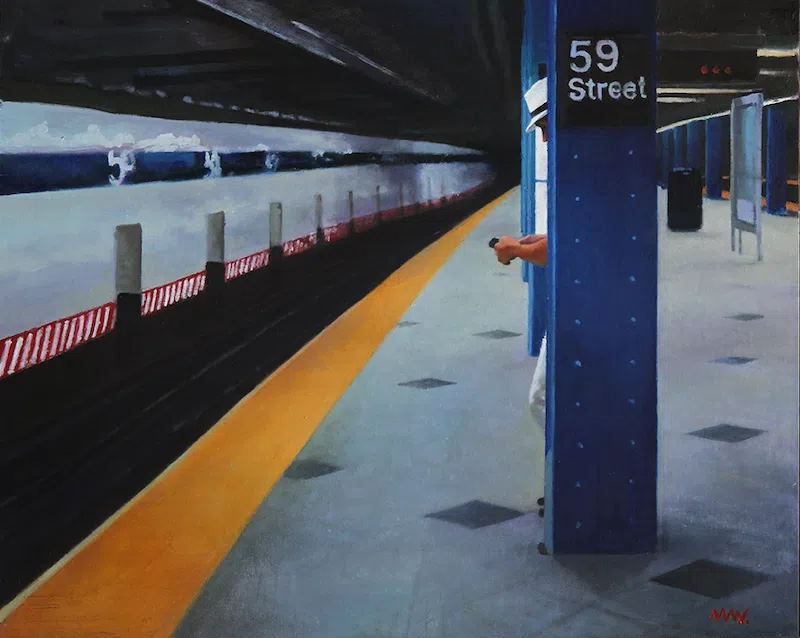
What makes a scene worth painting to you?
Several things. One is the light, another is the geometry of what I’m seeing, or it could be a scenario unfolding in front of me. For example, once I was in a bar drinking with a friend at the end of an evening when a couple came in and sat at a table. They got drunk, then argued; the girl passed out. The man got up and left her sprawled on the table. I never forgot that night, years later my model in the studio was wearing a dress that reminded me of that evening. I threw a sheet over a table and told the model to go to sleep; I started to work on my painting, Closing Time.
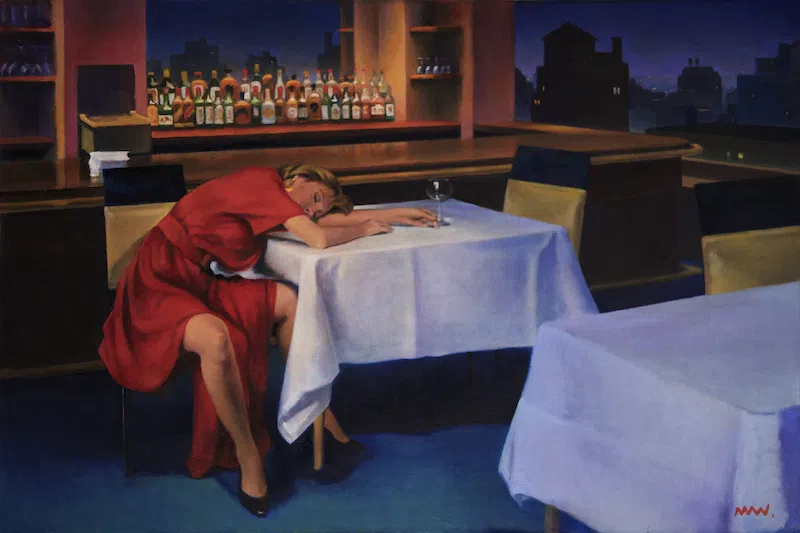
You spent a decade creating neon-based kinetic art before returning to painting. Can you describe how that experience continues to influence your work today?
It gave me an understanding of light and a reason to paint. When I decided to return to painting I sat in front of a blank canvas wondering what I was going to paint. One day I opened a book on Vermeer, ironically it fell open on a double page spread of The Allegory of Painting. Immediately I saw that Vermeer painted light; I understood light from my kinetic work and realized that was my path back to painting. I started a painting the next day titled The Skirt.
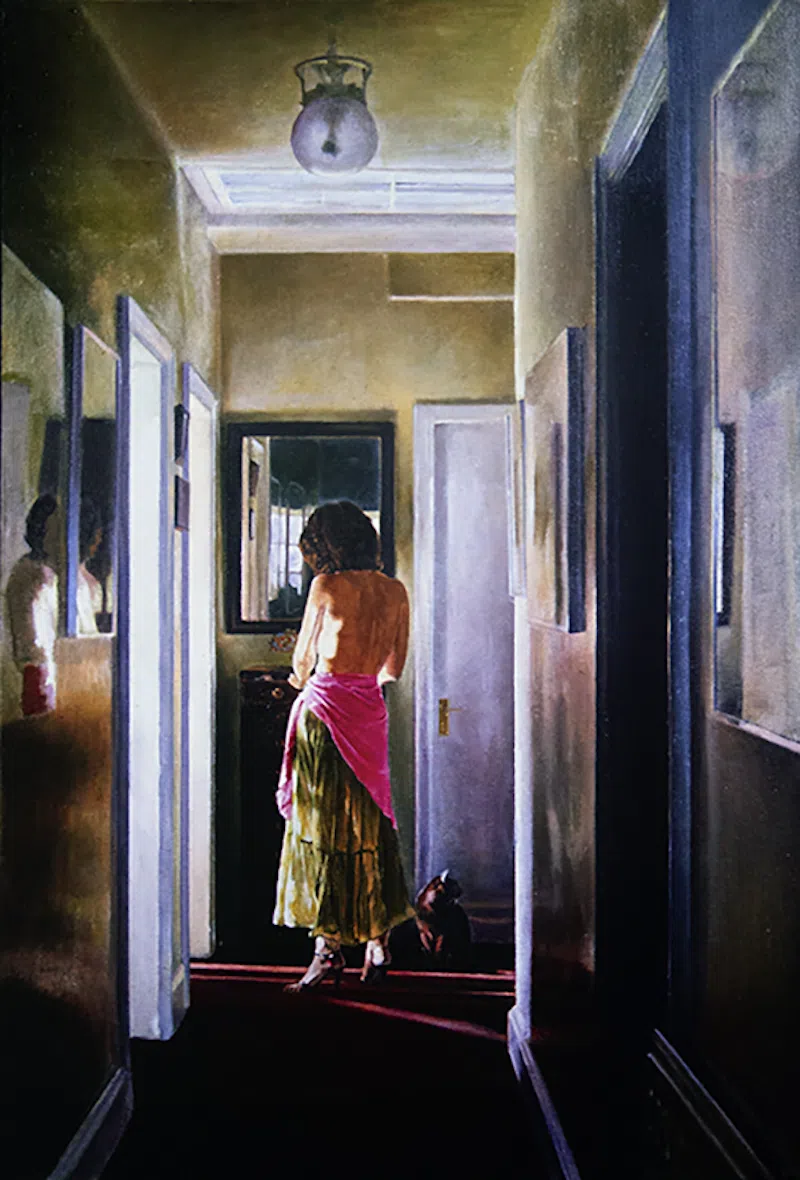
Which artists or filmmakers have inspired you and your work?
There are many; image-making can be simple or complex but the governing factor is that it visually works. Artists that use light well are of particular interest to me. For example the Hudson School painters of the 19th century and the Impressionists along with Caravaggio, Vermeer, Hopper, and Sloan, all of which painted with natural light.
I really like film noir and it can be an influence in the way I paint an image. There is a cinema in Newport, RI; walking into it is like walking into the past. I had always wanted to paint it but resisted because I thought it would be too much like an Edward Hopper. Then I thought why not, I’ll use noir lighting and paint my version of Hopper’s New York Movie. The result was After the Gig.

Can you walk us through how a painting typically evolves—from that initial spark to the final piece?
I’m very fluid in the way I make pictures. They come from my imagination. I use photographs as reminders of how something looks or how the light falls and I use live models but nothing is guaranteed to stay in a painting, they are reinvented constantly.
On one occasion, I painted children playing cards on the beach, then I deleted them and a lifeguard appeared who became the subject of the work. A few years later I looked at photographs of the painting in progress when the children were still in the work and realized it was a mistake to erase them. So I started another painting and painted Hearts on the Beach.

How do you use digital tools alongside painting?
By the end of each day, I photograph my painting. Then I download it onto the computer and continue working on it there. The advantage of this is that it speeds my work process. As I said earlier, my pictures are very fluid and oil paint takes a while to dry. So erasing a figure or adding one takes time, but on a computer with Photoshop I can do that in seconds, and the corrections I make on the computer I paint into the picture the next day.
There is a second important element to my painting and that’s narration. I’m a storyteller and I paint an open-ended narration to those stories; I ask questions rather than give answers. Often when I’m painting I think that it would be nice to play with different scenarios but don’t want to paint the same image.
Recently I have been making videos using AI that allows me to continue the story. It’s a digital tool that is intriguing.

Although you’re British-born and trained in London, you’ve become deeply associated with American Realism. How has being British shaped your view of American life in your art?
I was a kinetic artist in the UK. It wasn’t until I was living in New York that I really started painting, and all I’ve ever painted is America. I am an American Realist.
Being British is of less importance than being from another country; as an outsider looking in, I got a different perspective. And although I consider myself English, I don’t consider myself an English painter. I taught myself to paint in New York, painting American images.
When I arrived in the U.S. I believed that Abstract Expressionism was the American Art. But now I believe that the true American Art is Realism. “American Realism” is a 20th-century invention of Robert Henri, who preached “paint the grittiness of the city,” and realism in American painting has always been dominant and especially its iconic image: the solitary figure. I relate to that.
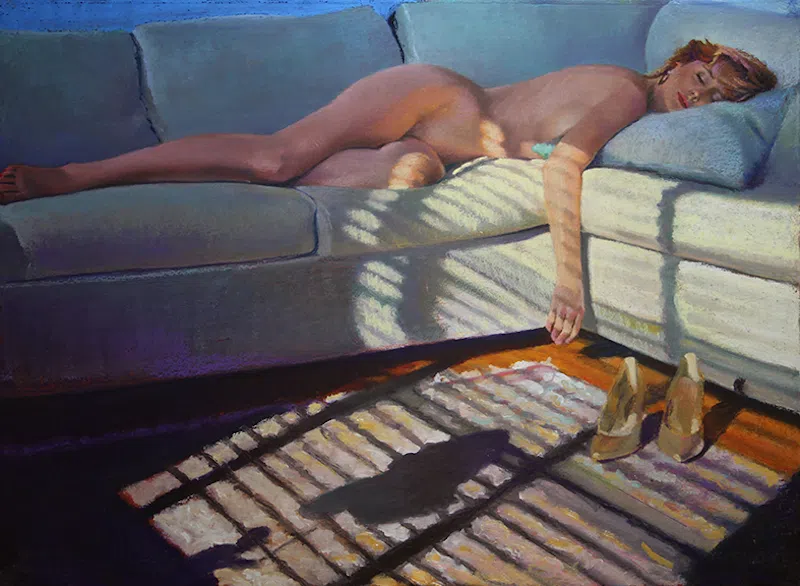
How do you strike that delicate balance between melancholy and optimism in your compositions?
Balance is important in my painting but the balance that you are referring to is instinctive. I trust my gut.
The other night I was at dinner with friends that commissioned me to paint their children years ago when I first arrived in New York. At the time I was a complete stranger to them.
The husband of one of the girls in the painting told me that not only had I captured them but also the dynamic of their relationships to one another and asked me how did I do that. I replied that “I paint what I see.”
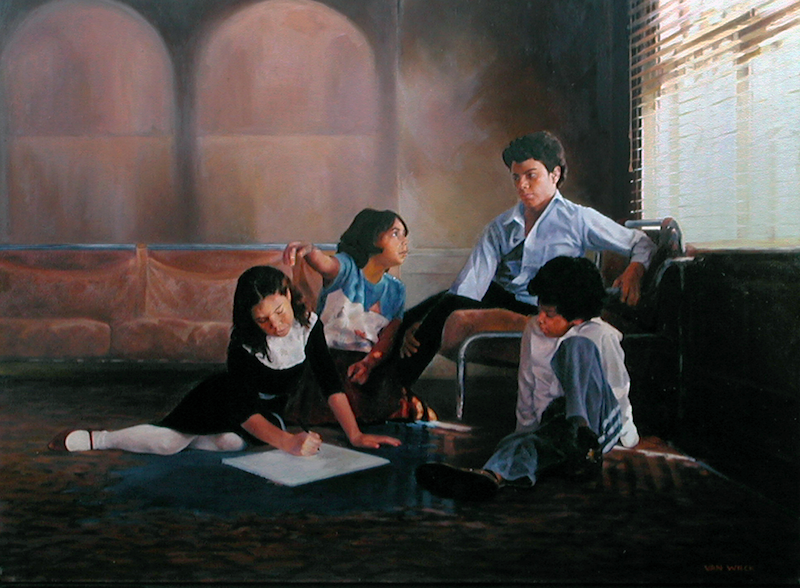
What does it mean to you that younger audiences are discovering your work online?
It’s very satisfying to know my work speaks to them. It means that my work will last.

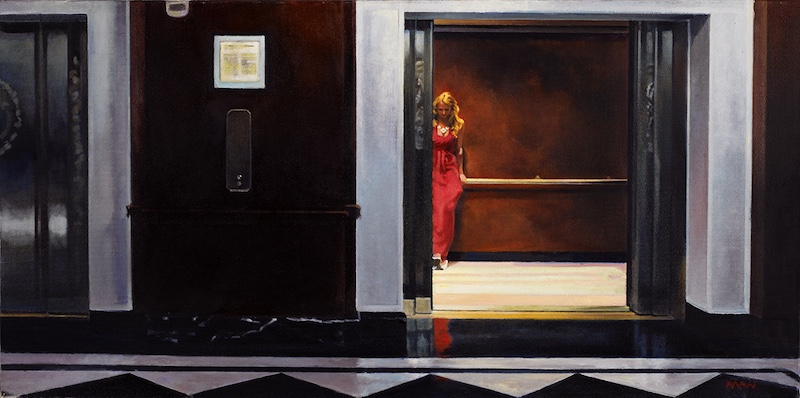

Nigel Van Wieck: Website | Facebook | Instagram
My Modern Met granted permission to feature photos by Nigel Van Wieck.
Related Articles:
Unraveling the Emotional Depth of Edward Hopper’s Modern Masterpiece ‘Nighthawks’
Edward Hopper-Inspired Paintings Explore the Mysterious Beauty of Modern Urban Nightlife
How the Groundbreaking Realism Movement Revolutionized Art History

